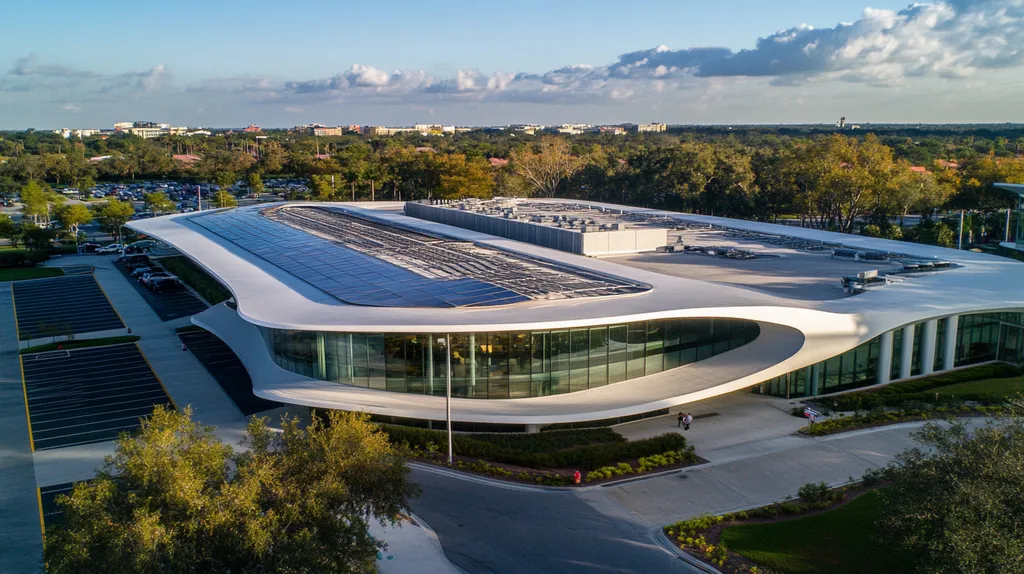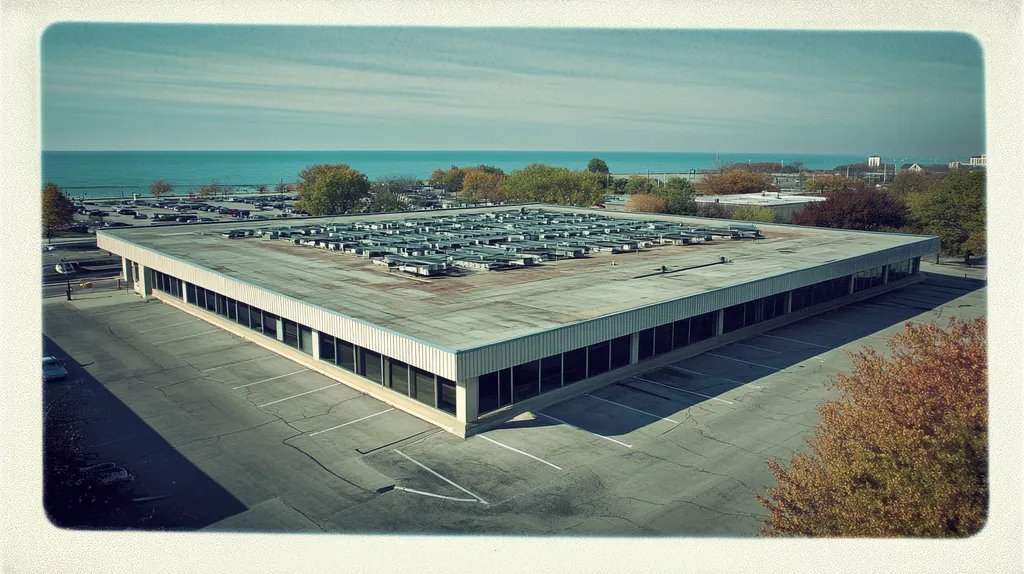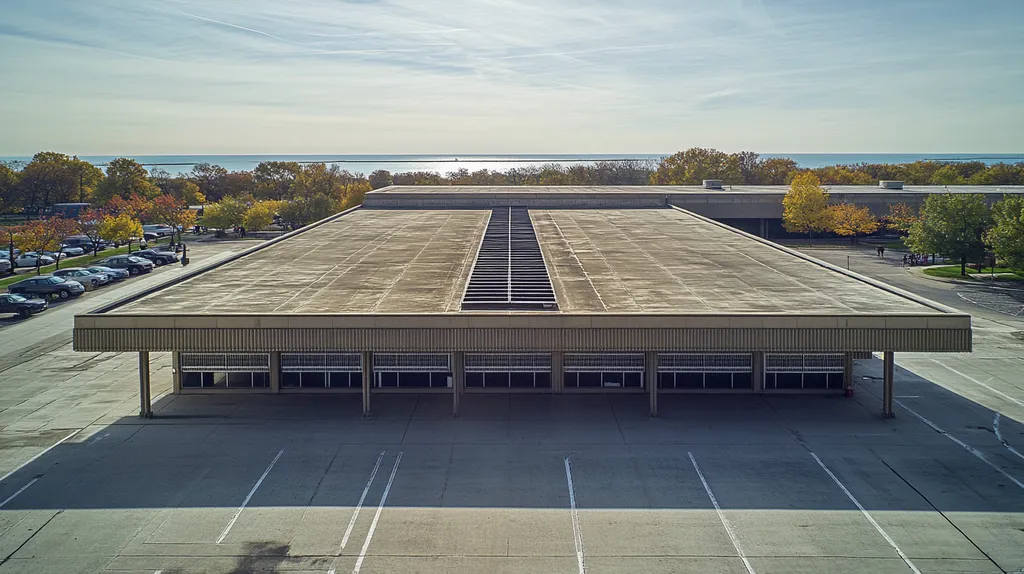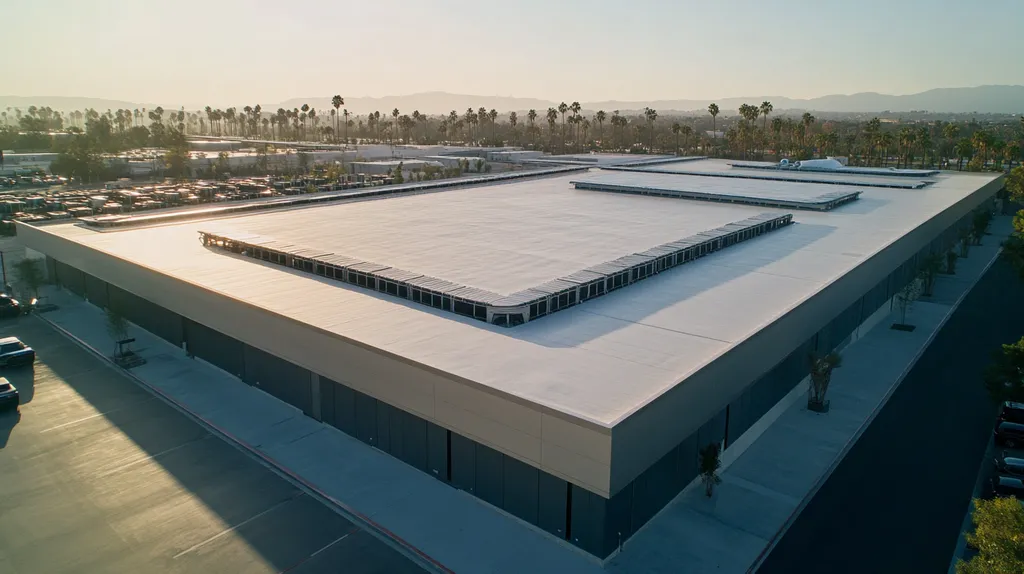Commercial buildings waste over $30 billion annually through inefficient energy usage, with roofing systems accounting for up to 25% of total heat loss in industrial facilities.
As energy costs continue to rise and environmental regulations tighten, conducting thorough commercial roof energy audits has become essential for property owners and facility managers seeking to optimize their buildings’ performance.
This comprehensive guide examines the critical components of commercial roof energy audits, from fundamental concepts and implementation methods to performance metrics and optimization strategies, providing actionable insights for sustainable, cost-effective facility management.
SECTION 1: FUNDAMENTAL CONCEPTS
In today’s increasingly competitive landscape, energy efficiency is essential for commercial property owners and facility managers. The U.S. Energy Information Administration reports that commercial buildings contribute to approximately 20% of total energy consumption in the United States. Conducting a commercial roof energy audit provides a structured approach to evaluate energy use and uncover potential savings. This section will clarify what energy audits are, examine their different types, and outline their benefits to illustrate their vital role in effective energy management.
Definition and Purpose of Energy Audits
An energy audit is a comprehensive examination of a building’s energy usage, aimed at revealing how energy is consumed and how efficiencies can be improved. For commercial roofs, this review encompasses key components like insulation, roofing materials, and HVAC systems, all crucial to the overall energy efficiency.
The purpose of these audits is multifaceted. First, they highlight inefficiencies that can increase operating costs. Moreover, they offer concrete recommendations for enhancing energy performance. By identifying these areas for improvement, property owners can significantly lower energy use and related expenses.
Energy audits also support broader sustainability initiatives. Implementing audit findings can lead to a reduced carbon footprint, benefiting the environment while enhancing a company’s reputation. This measurable impact can resonate positively with stakeholders and the community.
Additionally, energy audits often serve as a gateway to various energy incentive programs. Many utilities provide rebates for adopting energy-efficient solutions, helping to offset initial costs and promote long-term savings.
Types of Commercial Energy Audits
Energy audits can be classified into three main categories: walk-through audits, standard audits, and investment-grade audits. Each type caters to specific needs based on the facility’s complexity and energy demands.
A walk-through audit is the simplest form, featuring a visual inspection of the premises. These audits can quickly pinpoint evident energy-saving opportunities without the need for in-depth data analysis. While they are efficient and budget-friendly, the insights gained may not be comprehensive.
Standard audits delve deeper, involving meticulous monitoring of energy consumption over a set period. This type of audit yields more precise recommendations and is ideal for facilities with moderate energy needs.
Investment-grade audits represent the most thorough evaluation. These audits merge extensive data collection with financial modeling to predict savings from suggested improvements. This level of audit is typically recommended for larger facilities or those planning considerable upgrades.
Benefits of Conducting Energy Audits
The advantages of energy audits reach far beyond compliance. By uncovering energy-saving opportunities, property owners can enjoy substantial reductions in utility expenses. For instance, implementing strategies identified during an audit can yield energy savings of up to 30%.
Furthermore, energy audits contribute to enhanced comfort for building occupants. More efficient systems lead to improved temperature regulation and better air quality, ultimately increasing employee productivity and satisfaction.
Energy audits also facilitate proactive planning and budgeting. By gaining insights into energy consumption and identifying opportunities for improvement, organizations can prioritize upgrades and allocate resources wisely. This forward-thinking approach empowers facilities to safeguard their investments.
Lastly, energy audits strengthen a company’s reputation by showcasing a commitment to sustainability. As consumers increasingly prefer eco-friendly businesses, this dedication can provide a competitive advantage in today’s market.
SECTION 2: SYSTEM COMPONENTS
In the quest for energy efficiency, conducting a commercial roof energy audit is not merely beneficial—it’s essential. Each component of your roofing system plays a crucial role in overall performance. By focusing on vital areas, such as the building envelope, HVAC and lighting systems, and insulation, property owners and facility managers can unlock significant energy savings. This section will delve into how these components interact and the importance of optimizing them for enhanced energy efficiency.
Building Envelope Inspection
The building envelope acts as the primary shield against energy loss, making its inspection critical. A thorough evaluation can uncover leaks, cracks, and other issues that compromise insulation performance. For example, a well-sealed roof can minimize air leakage, potentially lowering heating and cooling loads by up to 15%.
Relying on limited inspections may leave significant problems undetected, leading to costly repairs and wasted energy. Property owners should routinely inspect for damaged membranes, loose flashing, and inadequate drainage. Taking a proactive stance on inspections not only boosts energy efficiency but also extends the roof’s lifespan.
Utilizing thermal imaging technology can further enhance inspections by pinpointing hidden areas of heat loss. This technology identifies problems that often go unnoticed, allowing for timely repairs that help maintain energy efficiency. By addressing building envelope weaknesses, property owners can drastically decrease energy expenditures.
Overall, the building envelope’s condition directly influences energy efficiency. Therefore, prioritizing regular inspections can pave the way for substantial long-term savings, making it an indispensable part of any energy audit.
HVAC and Lighting Systems Analysis
Analyzing HVAC and lighting systems is a pivotal step during a commercial roof energy audit. Inefficient systems can drastically hike operating costs. For instance, aging HVAC units frequently operate at subpar efficiencies, wasting energy that could be used more effectively.
It’s important to evaluate how roofing materials work in concert with HVAC systems to maximize performance. Proper ventilation and correct placement of units can prevent overheating and save energy. Regular maintenance practices, like cleaning filters and ducts, can enhance HVAC efficiency by up to 20%.
Lighting systems contribute significantly to overall energy use. Transitioning to energy-efficient LED lighting can drastically reduce electricity consumption. Additionally, employing daylighting techniques—such as reflective surfaces and skylights—can increase natural light without escalating energy costs.
By carefully analyzing HVAC and lighting systems, facility managers can discover valuable energy-saving initiatives. Taking an integrated approach encourages synergy between these systems, leading to a more holistic energy strategy that enhances overall performance.
Electrical and Insulation Evaluation
Assessing the electrical and insulation components within a commercial roof is vital for optimizing energy efficiency. Effective insulation prevents heat transfer, which can account for a staggering portion of energy loss. Studies indicate that buildings with inadequate insulation can lose up to 30% of heating and cooling energy.
Scrutinizing insulation materials and their effectiveness should be central to any energy audit. Over time, materials can degrade, impairing their performance. Upgrading to higher R-value insulation can enhance thermal retention, resulting in lower energy costs.
Additionally, a comprehensive evaluation of electrical systems is necessary for maximizing efficiency. Outdated wiring and poor connections can contribute to energy losses. Conducting regular audits can uncover these inefficiencies and highlight upgrades that not only enhance performance but also cut operational costs.
Focusing on electrical and insulation evaluation equips facility managers to implement measures that result in notable energy savings. Upgrading these components is not simply an issue of compliance—it is a strategic investment for long-term sustainability and reduced costs.
SECTION 3: IMPLEMENTATION METHODS
Conducting a commercial roof energy audit is a vital step toward minimizing operational costs and maximizing building performance. As energy prices continue to rise, businesses face the risk of squandering substantial budget resources without proactive strategies. For instance, the U.S. Department of Energy estimates that improper roofing can result in energy losses of up to 30%. The implementation process consists of three essential elements: preliminary assessment, on-site evaluation, and thorough reporting, each crucial for an effective audit.
Preliminary Assessment and Data Collection
The journey of implementing an energy audit begins with a preliminary assessment. This stage involves gathering essential data about the building and its rooftop features. Property owners should compile energy bills, maintenance records, and previous inspection reports to establish a solid baseline.
This preliminary phase is crucial for spotting energy consumption patterns and identifying potential inefficiencies. By analyzing historical data, auditors can focus on areas requiring deeper investigation during the on-site assessment. If a facility experiences seasonal spikes in energy consumption, the audit can prioritize roof performance during these times.
Moreover, recognizing the building’s design and operational usage informs expected energy demands. This collected information establishes a foundation for more detailed exploration, ensuring the audit effectively targets the most pressing energy challenges.
Ultimately, a comprehensive preliminary assessment is the linchpin for a successful audit, paving the way for meaningful improvements in energy efficiency.
On-Site Assessment and Diagnostic Testing
An on-site assessment is vital for understanding a roof’s physical state and energy performance. Trained professionals conduct visual inspections to identify common issues such as leaks, poor insulation, and material degradation. Early detection of these problems can avert further damage and reduce energy loss.
In addition to inspections, diagnostic testing plays a key role in this process. Techniques such as infrared thermography and blower door tests provide insights into the roof’s thermal performance. For example, infrared imaging can reveal heat loss areas, indicating where energy-efficient upgrades might be best applied.
This direct approach equips auditors with precise data that cannot be gleaned from records alone. Moreover, real-time analysis can uncover unexpected issues that could profoundly affect energy efficiency.
By merging visual inspections with diagnostic testing, auditors obtain a holistic understanding of the roof’s operating condition. This information is crucial for formulating targeted, effective recommendations.
Reporting and Recommendation Development
Following the on-site assessment, the next phase involves reporting findings and crafting actionable recommendations. A well-structured report should clearly summarize collected data, inspection results, and identified concerns.
Recommendations must focus on high-impact improvements based on a cost-benefit analysis. For instance, upgrading insulation in an inadequately insulated roof can significantly reduce energy costs. The report should also outline potential returns on investment, providing property owners with a clear picture of the financial implications of their choices.
Additionally, establishing an implementation timeline is crucial. Outlining both short-term and long-term goals enables facility managers to allocate resources effectively and plan upgrades without disrupting daily operations.
Ultimately, the reporting phase transforms data into concrete, actionable plans. This empowers decision-makers to tackle energy inefficiencies head-on, optimizing their roof’s performance and bolstering overall sustainability efforts.
SECTION 4: MAINTENANCE REQUIREMENTS
Regular maintenance of commercial roofs is not just a necessary step; it’s a crucial strategy for ensuring long-term energy efficiency and reducing costs. Research indicates that well-maintained roofs can lead to energy cost reductions of up to 15-20%, thanks to improved thermal performance and decreased heat absorption. This section highlights essential practices like routine maintenance schedules, predictive diagnostics, and annual evaluations to safeguard the investment made in roofing systems.
Regular Maintenance Schedules
Establishing a consistent maintenance schedule is vital for maximizing a commercial roof’s performance. This schedule typically entails biannual inspections that focus on critical areas such as seams, flashings, and drainage systems. These zones are particularly vulnerable to leaks and damage, making them essential for early detection.
Routine cleaning should also be a key part of any maintenance plan. Neglected debris can lead to water accumulation and increased thermal absorption, both of which negatively affect energy efficiency. Regular cleanings protect the roof membrane’s integrity and help minimize energy loss.
Documenting these maintenance activities is equally important. A thorough record allows facility managers to monitor the roof’s condition over time, helping to predict future maintenance needs and budget accordingly.
By adhering to a structured maintenance schedule, property owners can not only prolong the lifespan of their roofs but also enhance their energy performance, drawing in tenants or buyers who value sustainability.
Predictive Maintenance and Diagnostics
Predictive maintenance utilizes advanced technology to foresee potential failures before they disrupt operations. Tools such as sensors and drones equipped with imaging technology allow facility managers to collect real-time data on roof conditions. This proactive approach reduces downtime and maintenance expenses while addressing issues before they escalate.
For instance, thermographic inspections can uncover hidden leaks or insulation problems by detecting temperature variations on the roof’s surface. This information allows for targeted repairs that tackle specific issues instead of incurring unnecessary costs.
Integrating building management systems (BMS) further enhances diagnostic capabilities. These systems analyze energy usage patterns and environmental factors, leading to more informed maintenance decisions. This integration not only maximizes operational efficiency but also preempts potential problems that could affect energy performance.
Embracing predictive maintenance not only lowers costs but also promotes sustainability in roof management. By addressing issues early on, building owners can prevent costly emergencies while maximizing the energy-saving capabilities of their roofing systems.
Annual Re-Evaluation and Benchmarking
Annual re-evaluation of roof conditions is vital for ongoing energy efficiency improvement. This evaluation should include both visual inspections and performance measurements for a complete understanding of the roof’s efficiency. Facility managers can identify necessary upgrades or repairs and prioritize them accordingly.
Benchmarking against similar local properties can provide insightful comparisons. Analyzing energy performance data enables property owners to set realistic energy savings goals and refine maintenance practices, keeping their roofs competitive and aligned with industry standards.
Additionally, tying roof warranty renewals to these evaluations engages manufacturers in the process, offering insights into emerging technologies and materials that can further enhance efficiency.
Through regular annual evaluations and strategic benchmarking, facility managers ensure their roofs not only meet current standards but also excel in energy efficiency and durability, preparing for future challenges.
SECTION 5: PERFORMANCE METRICS
In an era where energy costs continue to escalate, understanding performance metrics is crucial for property owners and facility managers dedicated to optimizing energy efficiency in commercial roofing. Establishing clear benchmarks not only helps in identifying inefficiencies but can also significantly enhance a company’s financial health. By conducting energy audits, stakeholders can monitor their progress over time, ensuring that their buildings are operating at peak efficiency. This section highlights key performance metrics, including energy benchmarking, cost-benefit analysis, and strategies for ongoing monitoring.
Energy Benchmarking and Comparison
Energy benchmarking is a critical first step in assessing a building’s energy performance. This process involves comparing a facility’s energy usage data to that of similar properties in order to identify areas needing improvement. Techniques like analyzing Energy Star ratings or dissecting utility bills can help quantify energy consumption.
For instance, when a facility’s energy usage stands significantly above that of its peers, it often indicates underlying inefficiencies, such as heat loss due to outdated roofing materials or HVAC systems. By understanding these benchmarks, property managers can prioritize their asset management strategies effectively.
Establishing clear, measurable improvement goals is an essential part of effective benchmarking. By setting specific targets, facility managers can implement the necessary changes and monitor their success over time. To stay on track, annual reviews should be conducted for ongoing assessment and adjustment.
Investing in robust benchmarking tools can reveal invaluable insights that lead to significant energy savings. Knowing how a facility compares to others paves the way for crucial upgrades that not only lower operating costs but also enhance sustainability efforts.
Cost-Benefit Analysis and ROI Calculation
Conducting a thorough cost-benefit analysis (CBA) is paramount when making informed roofing decisions. This process entails evaluating potential energy upgrades against their costs, enabling property owners to identify which improvements promise the best returns. It’s essential to factor in not just the initial investment but also the long-term savings associated with reduced energy bills.
For example, when investing in reflective roofing, understanding both the upfront costs and projected energy savings will illuminate its return on investment (ROI). A comprehensive CBA should also consider maintenance costs, material lifespans, and trends in energy rates, empowering facility managers to make financially sound decisions.
A favorable ROI can significantly bolster a company’s reputation. Energy-efficient buildings often attract higher-quality tenants and may be eligible for tax incentives, further enhancing financial returns. Using software tools for cost and savings simulations can clarify the potential impact of various roofing decisions.
Through meticulous CBA, facility managers can prioritize roofing projects that align with financial objectives while enhancing energy efficiency, ensuring strategic investments that support sustainable practices.
Monitoring and Tracking Energy Savings
Once roofing improvements are in place, ongoing monitoring of energy savings is essential to confirm that these investments yield anticipated benefits. Regular checks validate whether energy-efficient upgrades are functioning as intended, requiring the use of energy management systems to track consumption patterns effectively.
For example, deploying smart sensors can provide real-time energy usage data, enabling facilities to adjust operations based on current demand. Regularly reviewing this energy data can highlight new issues or affirm the success of recent modifications, optimizing overall efficiency.
Additionally, consistently documenting energy savings provides crucial insights for internal evaluations, stakeholders, and auditors. Presenting clear data reinforces the effectiveness of energy strategies and demonstrates a commitment to sustainability.
In summary, a proactive approach to monitoring ensures that investments in roofing improvements continue to deliver results. Facility managers who prioritize ongoing evaluations and necessary adjustments can extend the lifespans and performance of their roofing systems, reinforcing their dedication to energy efficiency.
SECTION 5: PERFORMANCE METRICS
In a world where energy expenses are climbing, being well-versed in performance metrics is imperative for property owners and facility managers dedicated to maximizing energy efficiency in commercial roofing. Establishing clear benchmarks can not only illuminate areas of inefficiency but also significantly boost a company’s financial health. By conducting energy audits, stakeholders can effectively track improvements over time and ensure their buildings are running smoothly. This section will delve into essential performance metrics encompassing energy benchmarking, cost-benefit analysis, and ongoing monitoring strategies.
Energy Benchmarking and Comparison
Energy benchmarking is the cornerstone of evaluating a building’s energy performance. This involves comparing a facility’s energy usage data with that of similar properties to identify key areas for enhancement. Utilizing tools like Energy Star ratings or detailed utility bill analyses allows stakeholders to quantify energy consumption effectively.
For instance, a facility whose energy use is significantly higher than its peers likely faces inefficiencies—such as heat loss from inadequate roofing materials or outdated HVAC systems. By understanding these benchmarks, facility managers can make informed decisions about asset management and where improvements should be prioritized.
Setting specific and measurable goals enhances the effectiveness of benchmarking. By defining targets, facility managers can implement necessary changes and monitor their success over time. Adopting an annual review cycle for assessments ensures ongoing progress and helps recalibrate strategies as needed.
Investing in advanced benchmarking tools can unlock valuable insights that translate into substantial energy savings. Ultimately, comprehending where a facility stands in relation to others can motivate necessary upgrades and foster a commitment to greater sustainability.
Cost-Benefit Analysis and ROI Calculation
A meticulous cost-benefit analysis (CBA) is crucial for making prudent roofing decisions. This analysis evaluates potential energy upgrades against their costs, empowering property owners to identify which enhancements promise the most significant returns. It’s vital to consider not only initial investments but also long-term savings generated from reduced energy bills.
For example, evaluating the costs and projected savings from a reflective roofing system reveals its return on investment (ROI). An effective CBA should factor in ongoing maintenance costs, material durability, and energy rate trends, aiding in judicious budget allocations.
Moreover, a strong ROI can bolster a company’s reputation. Energy-efficient buildings tend to attract high-quality tenants and may qualify for tax incentives, further enhancing financial returns. Software tools designed for simulating costs and savings can illustrate the potential impact of various roofing choices.
By conducting thorough CBA, facility managers can prioritize roof projects that align with financial goals while advancing energy efficiency, ensuring that investments support broader sustainability objectives.
Monitoring and Tracking Energy Savings
After implementing roofing improvements, continuous monitoring of energy savings is essential to verify that investments are yielding anticipated benefits. Regular assessments validate whether energy-efficient upgrades are operating as intended, utilizing energy management systems to analyze consumption trends.
For example, smart sensors can deliver real-time data on energy usage, enabling facilities to adjust operations based on actual demand. Frequent evaluations of this data can uncover new issues or affirm the benefits of recent modifications, driving overall efficiency.
Additionally, keeping a meticulous record of energy savings not only supports internal assessments but also provides stakeholders and auditors with insightful data. Presenting clear metrics reinforces the effectiveness of energy strategies and highlights a commitment to sustainability.
Ultimately, a proactive monitoring approach guarantees that investments in roofing upgrades continue to repay dividends. Facility managers who prioritize regular evaluations and necessary adjustments are likely to see enhanced performance and longevity from their roofing systems, solidifying their dedication to energy efficiency.
Moving Forward
With commercial buildings wasting over $30 billion annually on inefficient energy usage, the imperative for comprehensive roof energy audits has never been greater.
As environmental regulations tighten and energy costs continue to rise, facility managers who fail to implement strategic audit programs risk falling behind competitors while unnecessarily increasing operational expenses.
The evidence is clear: properties conducting regular energy audits consistently achieve 15-30% reductions in energy consumption while extending roof lifespans by up to 50%.
By embracing the systematic approach outlined in this guide – from preliminary assessments through optimization strategies – facility managers can transform their roofing systems from energy liabilities into valuable assets that drive sustainability and profitability.
The future of commercial property management demands nothing less than this level of energy-conscious leadership.
FREQUENTLY ASKED QUESTIONS
Q. What is a commercial roof energy audit?
A. A commercial roof energy audit examines how energy is used in your building, identifying potential inefficiencies and offering recommendations for improvement. This process can lead to significant cost savings and improved energy performance, aiding in sustainable practices.
Q. How does roof maintenance affect energy efficiency?
A. Regular maintenance is key to optimizing energy efficiency in commercial roofing. Well-maintained roofs can reduce energy costs by ensuring proper drainage, sealing, and insulation, all of which prevent unnecessary energy loss and extend the roof’s lifespan.
Q. What are the types of energy audits available?
A. There are three primary types of energy audits: walk-through audits for initial assessments, standard audits for moderate assessments, and investment-grade audits for detailed, financially-driven evaluations. Each type suits different facility energy requirements and budgets.
Q. Why is a preliminary assessment important for energy audits?
A. A preliminary assessment gathers vital data about energy usage, establishing a baseline for identifying inefficiencies. This helps auditors focus on critical areas during the on-site inspection, ultimately leading to more effective energy-saving recommendations.
Q. What are key metrics for monitoring energy efficiency?
A. Key metrics include energy benchmarking to compare usage against similar properties, conducting a cost-benefit analysis for potential upgrades, and ongoing monitoring to confirm that energy-efficient measures are delivering expected results.
Q. How does insulation impact commercial roof energy use?
A. Insulation plays a critical role in minimizing heat transfer, reducing heating and cooling demands. Effective insulation can significantly reduce energy waste, leading to lower utility costs and improved overall energy performance for commercial roofs.
Q. What should I include in my energy audit reports?
A. Energy audit reports should summarize inspection findings, include data analysis, and provide actionable recommendations prioritizing cost-effective improvements. Establishing timelines for implementation and outlining expected returns on investment helps guide strategic decision-making for facility managers.











